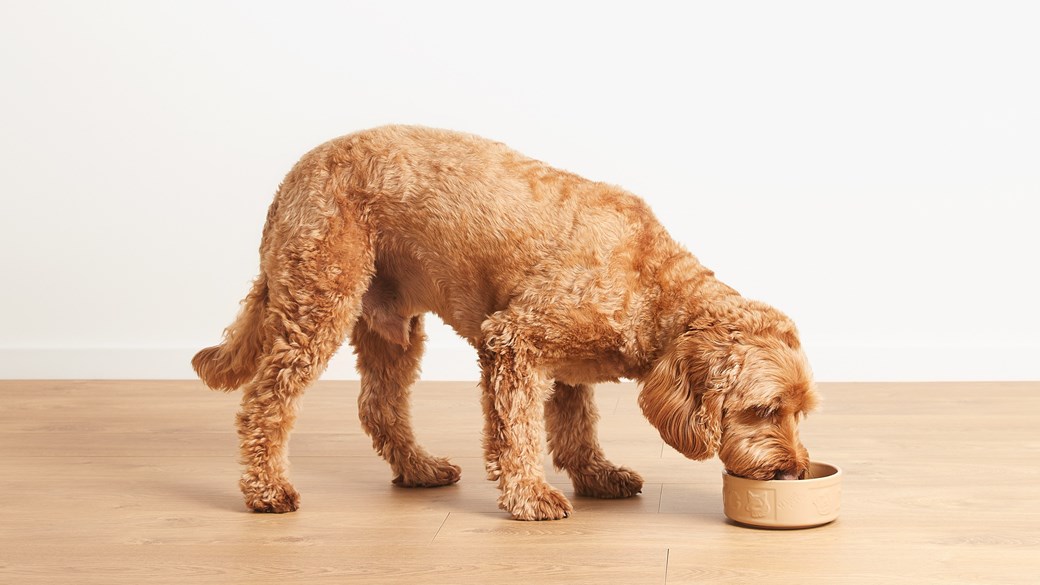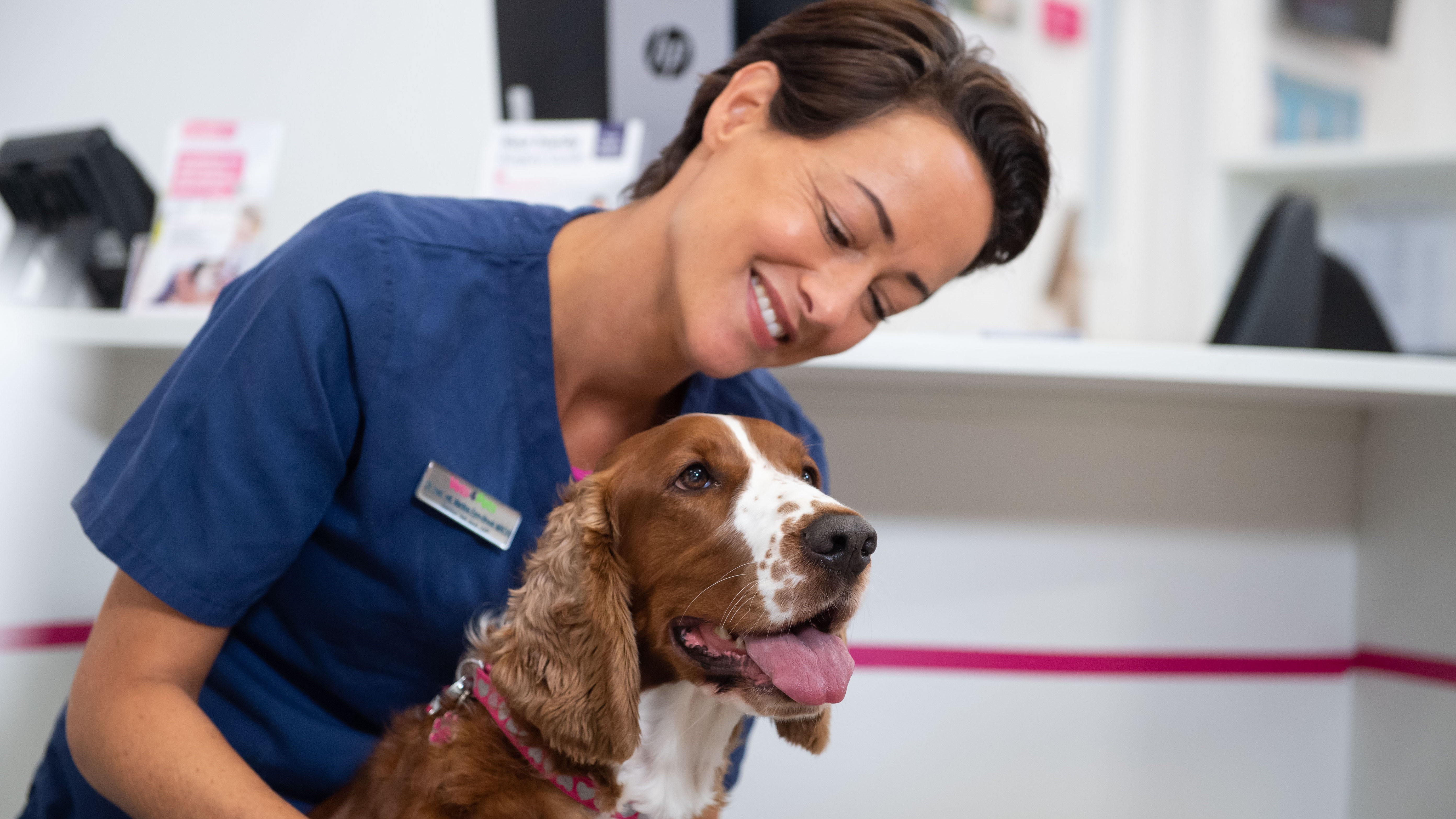
How to transition your dog onto a new food
You’ll need to make the transition gradually to reduce the chances of a tummy upset; and it might take a little time for them to try a new food, although some dogs will eat anything they are given!
Sometimes, during a dog’s life, it may be necessary to change their diet. So how do you swap your dog onto a new diet? Taking things slowly and applying the following simple recommendations will help.
When might you need to change your dog’s diet?
When you first get your puppy or dog, try to obtain some of their original food to use while they settle in and, if you decide to change their food, to help them gradually transition to their new diet. A change of home, owner and environment can be stressful and can sometimes cause an upset tummy, so a gradual change of diet is best.
If you are getting your new pet from a breeder they are usually happy to give you some of the diet they were being fed. If this is not possible, just buy enough of the old diet to last two or three weeks.
If your new puppy or dog has been on an unsuitable diet, weigh up the risks of remaining on the old diet for a bit longer against the risk of a possible tummy upset caused by a sudden change in food at an already stressful time.
Many diets we feed our dogs are called “life-stage” diets.
These have been designed to meet the nutritional needs of a pet for their age and activity level: as a puppy grows through adolescence to adulthood, and then into their senior years, their nutritional requirements change and they will benefit from being fed a food appropriate to their life-stage.
Some health problems may benefit from a change in diet to help manage the condition - these are prescription diets and are specially formulated to provide the nutritional needs of specific conditions. For example, some dogs are allergic to beef, and dogs with pancreatitis may need to be fed a low-fat diet.
If it’s necessary to make a more sudden switch from an old food to a new one e.g. to a prescription diet, your vet will explain the best way to do this, weighing up the risks and benefits of suddenly changing to a new diet.
Occasionally your vet might suggest waiting to change to a prescription diet so that the transition occurs when your pet is feeling better - being unwell can reduce appetite and put them off the new diet.
There is a variety of high-quality complete pet foods out there at a range of different prices and we know that feeding the best quality pet food is important to you, so if you would like advice on which food to choose, speak to your veterinary team or book a free Pets at Home nutrition consultation.
We can help you find a good quality pet food at a price that is affordable; helping you to save money while maintaining your pet’s health.
If your pet is overweight or underweight it’s best to seek the advice of your vet or veterinary nurse before making changes to their diet: for weight loss, simply reducing the volume of food they are given could result in them receiving inadequate levels of some nutrients, and might mean your pet is constantly hungry. And, whilst it’s encouraging to see your pet lose weight, losing too much, or losing it too quickly, can be detrimental to their health.
There are plenty of specially formulated foods on the market that can help our pets lose weight whilst ensuring they are still getting the right nutrients, in the correct amounts, to stay healthy. Always speak to your veterinary team if you have any questions or concerns.
The process of switching your dog's diet
An example schedule for changing to a life-stage diet is shown below, but how long this might take depends on a few factors:
- If your dog has ever had a sensitive tummy in the past, or if this is the first time their diet has been changed, it’s best to carry out the transition more slowly.
- How big is the difference between the old and new food? For example, are you changing from a wet (or raw) diet to a dry one? Is the change just between bags of the same food or a different flavour? Are you introducing a new brand, a life-stage diet, or a prescription diet? In general, the greater the difference, the longer recommended transition period.
- For a change in life-stage diet or to a prescription diet, it’s best to make the transition slowly, over about 14 days.
Days 1 - 3
In a separate bowl, offer a small amount of the new food. Depending on the size of your dog, this could be just a teaspoonful, or it could be a little more. If your dog isn’t keen on the new food at first, don’t worry, they might just need more time to become familiar with it, so wait until they are happily eating it before you increase the amount.
Days 4 - 6
If your dog is happy with the taste of the new food, mix 25% of the recommended amount (based on the packaging) of the new food with 75% of the original diet in the same bowl. If one of the diets is raw keep the foods in separate bowls.
Days 7 - 9
Offer 50% of the recommended amount of the new diet and 50% of the original.
Days 10 - 13
75% of the new food with 25% of the original diet.
Days 14
Phase out the old diet completely – now your dog should be on 100% new food.
Monitoring your dog on their new food
Be prepared for it to take a few months, and a bit of trial and error, to know whether a new food suits your dog. When your dog is on a suitable diet you can expect them to have a shiny coat, bright eyes and, provided their teeth and gums are healthy, inoffensive breath. Their faeces should be firm and there should be no flatulence.
You might need to adjust the amount being fed to keep your dog's weight within a normal range or body condition score (BCS).
Your vet team will also be happy to help you with body condition scoring. It’s a good idea to reassess BCS every couple of weeks, adjusting the amount you’re feeding until your dog is maintaining a normal BCS.
What problems might occur when you change your dog’s diet?
This won’t be a problem for lots of dogs, but some are a little fussy and might not want to try the new food. If this happens, just keep offering a small amount of the new food and give them time to try it. If your dog still isn’t keen after a few days, consider changing to a different new diet.
If your dog eats the new food but then goes off it, try reducing the amount of the new diet until your dog is eating it again, and then gradually increase it once more.
Remember to never leave wet or raw food down for long periods - it can attract flies and/or go off. Serve regular, small helpings so that the food is always fresh and attractive to your dog.
Sometimes sudden changes of diet can upset a dog’s tummy: you might see soft faeces or diarrhoea; vomiting and/or flatulence; or they might just not seem themselves. Your dog might not want to eat normally, even though they seemed to like the new diet.
If you think your dog’s new food has upset their digestion, try reducing the amount of new diet and see whether their tummy settles down. If things haven’t improved within a day or two, remove the new food completely and return to the original diet, and if your dog then seems normal again, begin to re-introduce the new food. If adding the new food back in affects your dog’s digestion again then the new diet might not suit them and you should try an alternative.
Other things can cause tummy upsets, not just a change in diet: if you’re concerned, give your vet team a call, they will always be happy to help and sometimes it can take veterinary treatment to settle things down.
Health Plans to keep your dog healthy
At Vets4Pets we offer a range of Health Plans that make essential routine treatments more affordable. You'll save money on things like annual vaccinations, flea and worm treatment and routine health check-ups.

Dog Advice
Read more of our expert dog advice to keep your dog happy and healthy.
